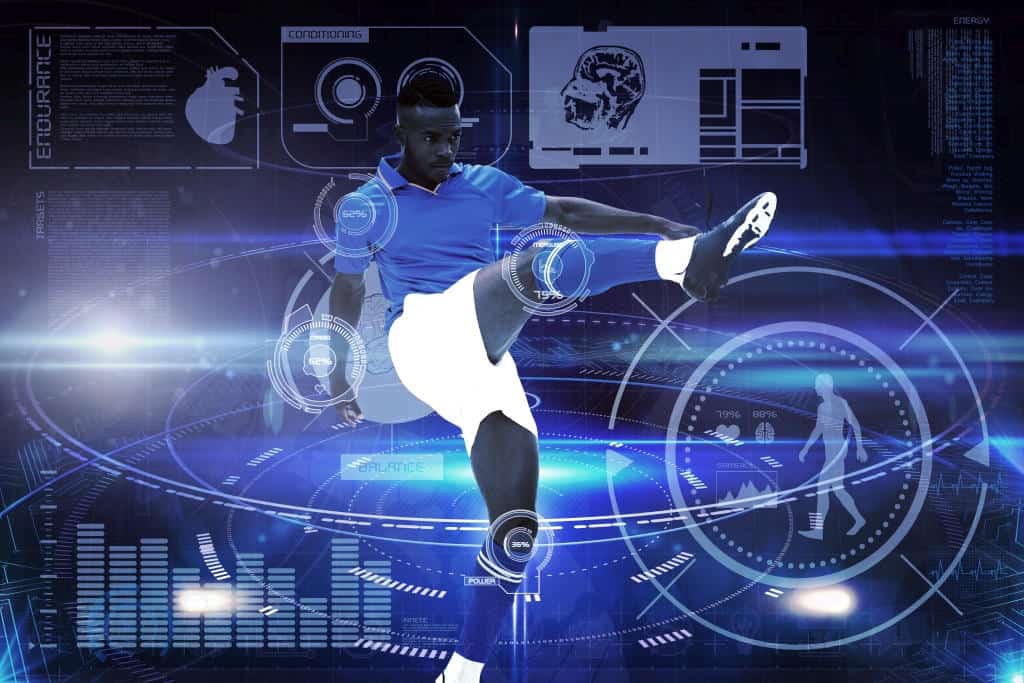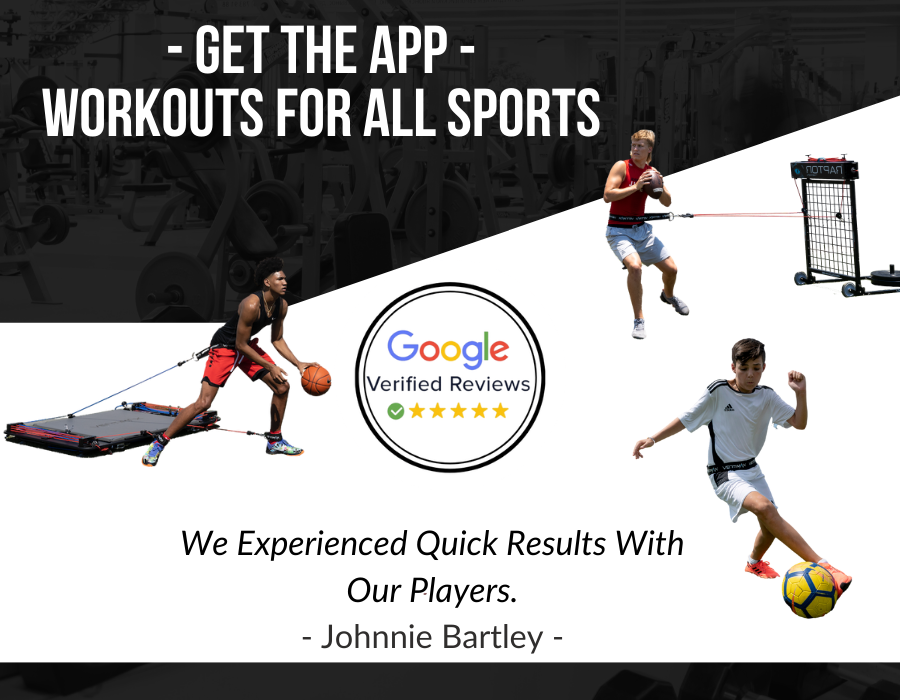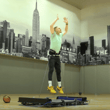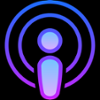As the value attached to athletics continues to increase across all sports, athletic fitness trends continue to advance the level of play. Coaches and athletes are constantly looking for methods to gain an edge and stay ahead of the competition.
Evaluating new technology and training methodology is part of the job description for sports teams at the professional level, but is now becoming part of the process for training youth athletes.
We now have a multitude of new technology platforms, artificial intelligence (AI), biometric data, gps tracking, smart balls, and wearable technology for athletes. The inclusion and awareness of levels of exertion and recovery metrics now can be taken into consideration when developing training regiments.
Coaches, parents and athletes should evaluate how any new technology and training method benefits their particular sport, as not all advances in the fitness realm may be universally effective for athletes across different sports. With all that in mind, let’s take a look at some of the new trends for specific basketball, football, baseball and soccer. Most sports have similar technologies emerging everyday.
Top Trends for Basketball
Within the basketball space, there is no shortage of new technology advancements, with the promise of developing an athlete’s sport specific skillset as the selling point. There is also an ever-evolving thought process behind how athletes should approach strength and conditioning training. Let’s examine some of the training trends in basketball.
1. AI for Basketball Skill Development
Recently, artificial intelligence (AI) is used to assist sports training, especially basketball, has certainly increased in recent times. In this scientific study done on the potential viability of Artificial Intelligence to be able to track player movement, researcher found they were able to track the primary player actions (catching, passing, dribbling, and shooting) with 98.95% accuracy. Undoubtedly, being able to track performance with this level of accuracy should allow for more precise evaluation and the development of better training programs.
There are currently numerous options available for those athletes looking to leverage AI to enhance their training, primarily through tracking the ball, allowing players to develop their ballhandling or track their shooting performance with precision. The abundance of data that new AI training devices will produce should lead to superior training and more consistent results from athletes.
2. Multiple Movement Training For Basketball
When it comes to basketball in particular, research has found that combining movement patterns (jumping, then sprinting) in training workouts leads to better performance and improvement. This appears to be due to the inherent nature of the sport, where high-intensity, short bursts of exertion are common when running and jumping occur.
When looking for the best way to implement drills and exercises that allow for quick burst of activity and transistions, athletes should explore the versatility VertiMax offers for training as you play the game in real life. With the VertiMax V8 or Raptor, athletes can perform a variety of movements, from sprinting to jumping to moving laterally. In addition, VertiMax will help enhance performance through any of these exercises through its unique resistance system designed to targeted muscle groups while training.
Top Trends In Football
New technology is also evolving the way football players and teams measure performance.
1. Football Tracking Data & Analytics
The development of football tracking is making its way into the sport, where wireless cameras can track the ball and collect data allowing for real-time evaluations and analytics of the football team. Increased football tracking data combined with the data from wearable tracking devices, coaches and players will be able to better understand the dynamics that occur during game play and adjust their training preparation accordingly.
2. Virtual Reality Technology
As far as sport specific training goes, high-level football players have begun to use Virtual Reality as a method for preparing for games. This new immersive technology allows players to replicate game-like situations and accelerate the learning process, all while eliminating any physical demands on the player. With the ability to be used from anywhere, VR is a tremendous learning tool for players that should become more available across all levels as the desire to limit injury becomes the norm.
Top Trends In Baseball
Baseball technology is growing with more data and analytics to decrease player injury, increase player performance, and give fans more reasons to engage in the game.
1. Baseball Swing Analysis
Baseball has had a tremendous amount of new technology come available in recent years, benefitting the way baseball athletes train. For hitters, the introduction of bat swing analysis technology that allows players and coaches to gain insights from every single swing has enhanced the way teams go about player development. The unique swing metrics that are available (like velocity, angle, and plane) make training much more efficient, as players can hone in on a certain technique they are trying to develop.
2. Baseball Pitcher Mechanic Analysis
Pitchers also have benefitted from AI technology, as there are now platforms that will analyze the mechanics of a pitcher’s motion. This technology is hugely beneficial in multiple ways, as not only does it analyze a player’s throwing motion for ways to improve technique, but it can also assess inefficiencies in the mechanics that could lead to injury at some point. With the abundance of elbow injuries that occur with young pitchers, using technology to help prevent injuries should be a priority for all players and coaches.
Top Trends In Soccer
Soccer, or football, is one of the most popular sports in the world, and it has been at the forefront of sports technology for many years. From wearable devices to video analysis tools, technology has transformed the way soccer is played and trained for. Let's explore some of the top sports technology for soccer.
1. Connected Smart Ball Tracking
The first example of “connected ball technology” was featured during a FIFA World Cup. There is a sensor suspended inside the ball. Together, this technology and a variety of receivers placed all over the field are utilized to track the ball extremely precisely. The match officials will be informed immediately when the ball crosses the goal line, and the referee will wear a wristwatch transmitter that shows the data.
For soccer players, the new smart balls are equipped with sensors that track your every move. Data collected by a smart soccer ball is sent to a connected smartphone or tablet, where coaches or athletes can access a variety of training drills and exercises. Smart balls allow you to have practice sessions to measure your performance and usually have companion apps for mobile devices and even connect to a screen. With these sessions, you can practice and improve dribbling, speed, footwork, kicking, ball control, improve your weaker foot, and build confidence.
Use smart soccer balls with VertiMax equipment for unique and innovative training tools that can help players of all levels improve their skills and reach their full potential.
2. Biometric and Tracking Devices
Player tracking technology allows coaches to track the performance of individual players and the team as a whole during training and matches. GPS tracking devices are worn by players and record their movements, distance covered, and speed during the game.
The data collected by GPS tracking devices can be used to optimize training programs and improve performance. Coaches can analyze the data to identify areas where players need to improve, adjust their training accordingly, and monitor their progress over time.
There are even trackers for soccer shoes to track your performance on the pitch. Insoles is a high-tech device that fits snugly inside your soccer shoes packed with sensors that measure shot power, distance traveled, running speed, and the number of kicks.
2. Virtual Reality
Virtual reality technology is also being used in soccer training. Players can use VR technology to simulate real-world scenarios and train in a safe and controlled environment. For example, players can practice set-pieces and penalty kicks in a virtual environment, allowing them to improve their technique and build confidence.
Other Sports Training Trends
Individual Focus And Ball Skills Training
As far as methods of training, coaches in the space have advocated that players should focus on developing their ball skills. This seems to be the prevailing trend across all sports, as many coaches are emphasizing individual player development and implementing programs to help promote it within their teams.
One of the best ways for players to work on their individual skills is with the VertiMax, as it is a truly unique platform that allows athletes to work on strength and speed training while also developing their sport-specific skills. With the generous range of motion that the VertiMax V8 or Raptor affords athletes, along with its mobility and functionality that allows it to be used anywhere, makes it the perfect training equipment for soccer players.
Check out the video below for an example of how soccer players can use the VertiMax while working on their ball skills.
Mental Performance Coaching
In addition to the new technology and training ideas that have been introduced in the sports landscape recently, another trend that is becoming common across all sports is mental performance coaching. Players and teams have started to realize that just like physical skills, the mental approach to performance and competition needs to be refined on a continually basis. Mental performance coaches can help athletes with visualizing performance, improving their self-talk, and controlling their ability to remain calm once adversity hits. Many teams at higher levels of sports are starting to address this by hiring coaches to help with this, but athletes at lower levels can also get help from mental performance coaches, as many operate on a freelance basis.
Functional Training
More and more, athletes and other fitness enthusiasts are incorporating functional training into their workouts, which focus on the 7 functional movements of the human body (pull, push, squat, lunge, hinge, rotation, and gait). This is an effective way to maintain symmetry throughout the body and establish balance across muscle groups. Not only can you build strength and power, but athletes can improve balance, coordination, range of motion and mobility with functional training. For those looking for ways to include functional training into their routine, training with the VertiMax is an excellent way to enhance your results. The VertiMax’s one of a kind resistance system is designed to allow athletes to perform these functional movements while also loading the body, leading to superior performance.
Stay on Top of the Latest Sports Trends
The landscape of fitness, health, and wellness is constantly evolving, as advances in technology and improved methodologies of training are always hitting the market. As athletes and coaches, it’s important to stay updated on the potential developments in the world of fitness, as it could provide you with an advantage on your competition. For those athletes who are looking for a new and innovative way to train, check out the VertiMax V8 or Raptor training platforms. The VertiMax platforms allow athletes of any level to train like a professional, with an advanced resistance training system that produces explosive results. VertiMax also has unrivaled versatility, as users can take it anywhere they want to work out. Visit VertiMax.com and check out any of our exercise ideas, sport-specific instructions, or talk to support about any questions you might have.





.png?width=110&name=Listing%20Image-basketball%20ladder%20drill%20%20(350%20x%20350%20px).png)














